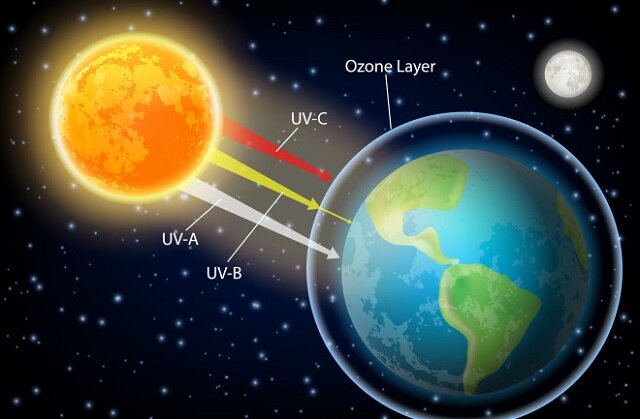Iran ahead of schedule in preserving ozone layer

TEHRAN – Iran was committed to reducing ozone-depleting substances by 35 percent by the beginning of 2022, which is currently ahead of schedule reaching 67 percent.
According to the schedule of the Montreal Protocol on Substances that Deplete the Ozone Layer (the Montreal Protocol), Iran has been able to fulfill its obligations and remove 9,800 tons of ozone-depleting substances from the consumption cycle, which has caused the emergence of technologies compatible with the ozone layer in 1,378 production and service units.
The National Ozone Layer Protection Plan has been one of the pioneering plans in the fight against the destruction of the ozone layer. So far, it has received 4 letters of commendation from the Montreal Protocol and the United Nations.
Despite sanctions, Iran is among the leading countries in the field of expanding regional cooperation to use local capabilities to manage and remove substances that destroy the ozone layer, and control the trade of materials and goods containing these substances.
The National Ozone Layer Protection Plan has so far received 4 letters of commendation from the Montreal Protocol and the United Nations.
World Ozone Day is celebrated every year on September 16 as a tribute to the signing of the Montreal Protocol. It was on this date in 1987 when this protocol was signed.
The theme for the 2022 International Day for the Preservation of the Ozone Layer, is “Montreal Protocol@35: global cooperation protecting life on earth”.
The theme recognizes the wider impact the Montreal Protocol has on climate change and the need to act in collaboration, forge partnerships and develop global cooperation to address climate challenges and protect life on earth for future generations.
Important layer
The ozone layer is of great importance for sustaining life on earth, if harmful emissions are reduced enough, it will take about 50 years for the ozone layer to repair so it requires global attention and action.
34 years ago, the use of harmful man-made chemicals began eating away at the ozone, the hole over Antarctica was first discovered by the British Antarctic Survey in 1985.
The ozone layer is a part of the atmosphere that has high concentrations of ozone (a gas made of three oxygen atoms O3), compared to oxygen molecules that exist in nature as a pair of oxygen atoms. It exists 10km to 40km above the surface of the earth in a region called the stratosphere and contains 90 percent of all the ozone in the atmosphere.
Some harmful gasses including HCFC and Chlorofluorocarbons (CFCs) can interfere with the formation of ozone; mostly causing gaps or holes in the layer, as well as passing UV radiation from the sun to the atmosphere.
CFCs are referred to compounds of carbon, hydrogen, chlorine, and fluorine typically gases used in refrigerants and aerosol propellants. They are harmful to the ozone layer in the earth's atmosphere owing to the release of chlorine atoms on exposure to ultraviolet radiation.
HCFCs are also man-made compounds containing hydrogen, chlorine, fluorine, and carbon and do not occur naturally anywhere. These compounds are used in refrigeration, aerosol propellants, foam manufacture, and air conditioning.
HCFCs are less dangerous causing a smaller risk to the ozone layer; while being very powerful greenhouse gases, which are nearly 2,000 times more potent than carbon dioxide in adding to global warming.
Ozone hole shrinking
The ozone hole which was once the major environmental concern turned into the least important concern today; as the concentration of harmful emissions has considerably reduced by 14 percent since 2000.
The hole has been shrinking by 1-3 percent a decade.
However, the upper ozone layer above the Northern Hemisphere is said to be completely repaired in the 2030s, and the gaping Antarctic ozone hole should disappear in the 2060s, according to a scientific assessment released in 2018 at a conference in Quito, Ecuador.
According to the UN, efforts to protect the ozone layer have also helped to tackle climate change by preventing the release of about 135 billion tons of carbon dioxide since 2010.
By the end of the century, eradicating HCFCs emissions not only can lead to the ozone layer repair but to reduce the temperature raise up to 0.4°C.
FB/MG
Leave a Comment